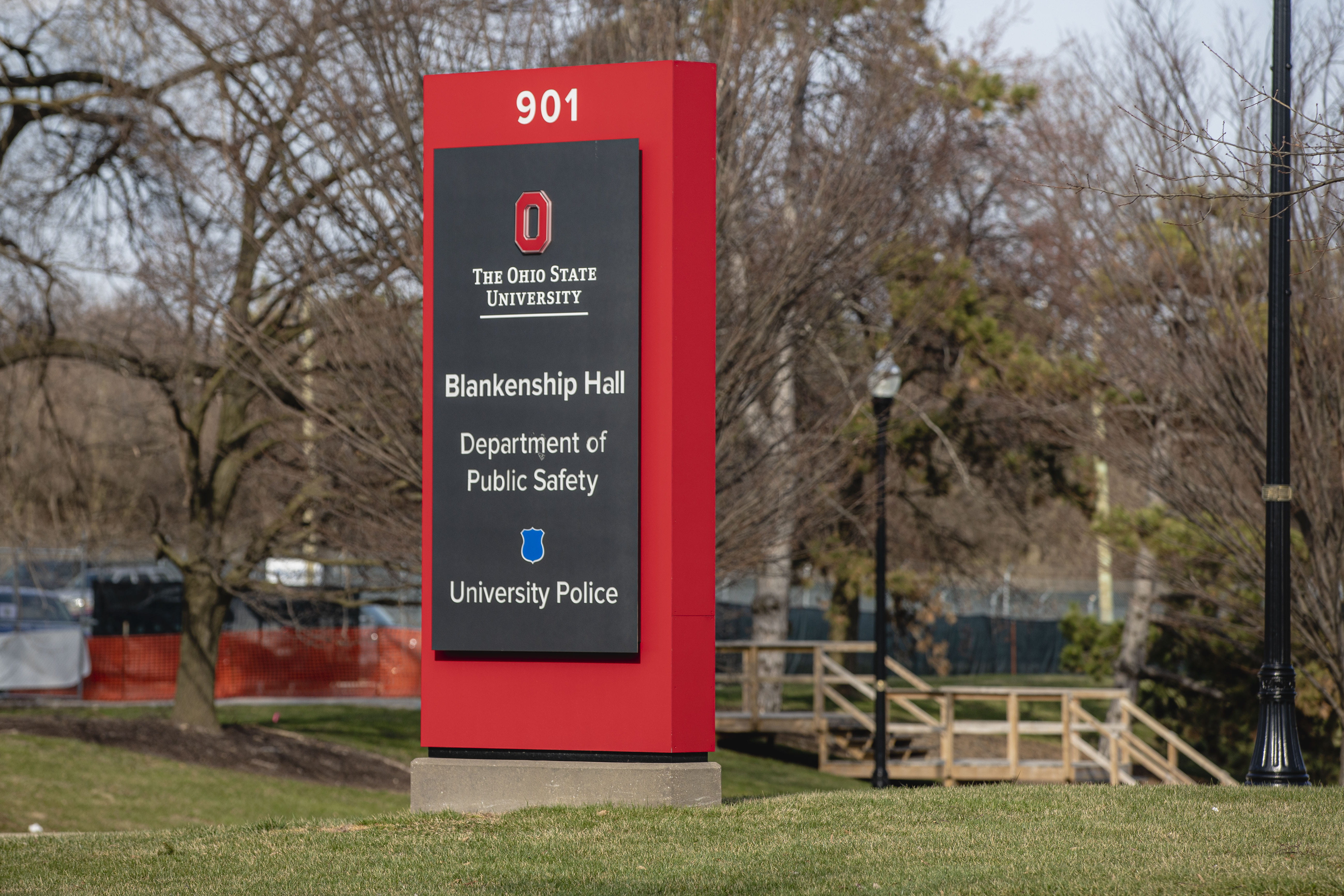
Blankenship Hall, located on West Campus, houses the Department of Public Safety. It was named after Michael Credit: Zachary Rilley | Photo Editor
Twenty-six years ago on March 7, 1997, the old Veterans Administration Clinic at 901 Woody Hayes Drive was given a new name — Blankenship Hall. The new name was not that of a rich donor or a noteworthy academic. He was a police officer — the only University Police officer killed in the line of duty. Michael Blankenship spent his final hours in a small classroom with some instructors and students. I was one of those students and here are my recollections.
On the afternoon of Feb. 10, 1997, I attended class in the old phys ed building (where the RPAC is now). The class concerned self-defense teaching and consisted of instructors and assistants in the PAES 172 Self-Defense course. That day, we had guests with brains for the picking. One of them was University Police officer Mike Blankenship. Mike was one of the Rape Aggression Defense instructors for the University Police Department. If I had a better memory, I would describe our discussions during that paltry two hours. I do recall saying goodbye to Mike afterward, but more talk was cut short. He had been called to service somewhere on campus and had to rush off.
That night, I was awakened by a phone call from the instructor, Gary Joseph, who informed me that officer Blankenship had been shot and killed at the Wexner Center for the Arts shortly after our class. I met with Gary and a few other instructors to process what little we knew at that time. Despite our familiarity with many aspects of violence, there wasn’t much which had prepared us. Gary and others wrote this letter to The Lantern shortly thereafter: “Officer had great commitment to safety.”
Mike Blankenship was one of my bike patrol instructors when I worked for USG’s CrimeWatch Escort Service from 1990-95. I appreciated Mike’s sense of humor while he taught us to jump curbs, go down steps and otherwise risk life and limb while having a blast on two wheels. A year or two later, I took the bike class a second time. I was there not only for extra practice, but to help with the new students. In 1995 I became a security officer at the Wexner Center for the Arts. I also began helping to teach PAES 172 Self-Defense classes with Gary Joseph. Mike visited us once or twice in our 242 Larkins office to talk shop.
After the crime scene was clear, I was posted in the ground floor lobby area of the Wexner Center. I watched workers refinishing the floor, which had been cleaned of blood. Outside, the 15th Avenue Plaza was full of half-burnt candles from a campus vigil for Mike. This was the most difficult and lonely duty I’ve ever had.
A huge video screen now hangs at the spot where Mike and his partner had the suspect against the wall. The only sign of the tragedy is evidence of the investigation: one can see the weld lines at the bases of the white handrail leading up to the 15th Avenue exit doors (The rail had been removed to preserve any fingerprints left on it by the killer).
Those who want a better description of the crime can read the vignette on page 56 of the FBI’s Officers Killed and Assaulted report from 1997: C:WORK97LEOKAP.PDF (fbi.gov)
I said goodbye to Mike for the last time at his funeral service held on a Friday at 10:30 a.m. inside Mershon Auditorium.
Though I was not ready to see it yet, I made it clear I wanted to see the video. A year later, I was lent a surveillance tape compilation. I watched it alone in my parents’ cold house (they were on vacation). I have studied the use of force and police survival since my teens, but this experience was uncomfortably personal. The CCTV video was grainy with little detail.
I recall the suspect had each of his hands shoved into his jacket pockets, with Mike on his right side and officer Sandra Niciu on his left. The tape showed how quickly a life could be taken with an upwards arm jerk and a finger convulsing on a trigger. Mike was shot once and died in the emergency room. The killer ran off, firing at officer Niciu as he left.
Mike Blankenship was a good person and a good cop. Many of the folks who knew him well said he was one of the best. He was concerned with student safety and safety education; often disappointed by too few students interested in crime prevention learning opportunities. Had Mike lived, he would be retired.
Everyone should know the story behind “Blankenship Hall.”
Karl Spaulding is a security officer at Ohio State. Blankenship Hall houses commencement and official events, the Department of Public Safety — which includes University Police — and internal audit, according to its website.


